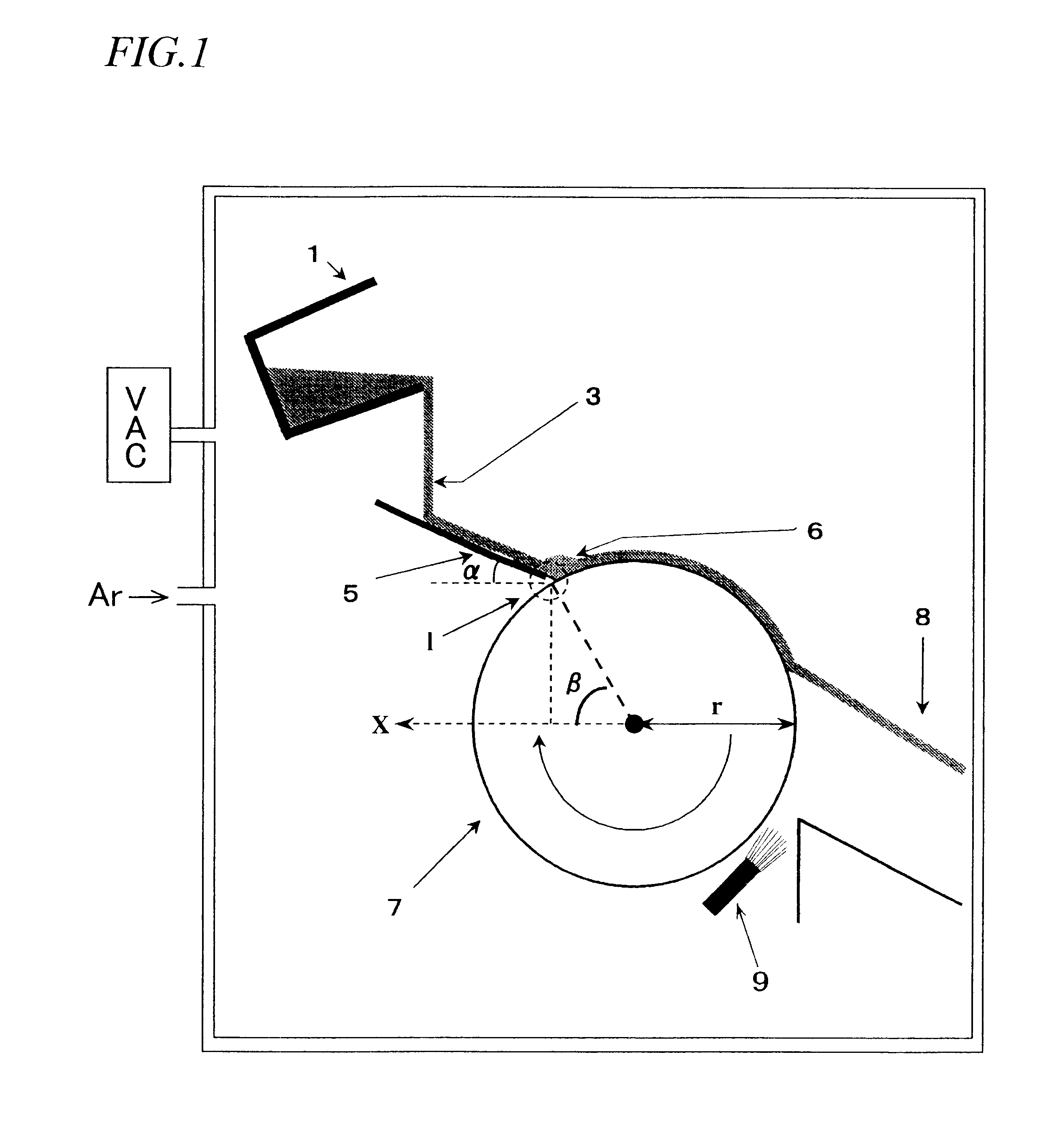Method of making material alloy for iron-based rare earth magnet
a rare earth magnet and alloy technology, applied in the field of making material alloys for iron-based rare earth magnets, can solve the problems of high remanence b.sub.r of 0.5 t or more, high cost of sm-co type magnets, and high cost of producing nd--fe-b type magnets, so as to increase the thermal resistance of alloys and improve the loop squareness of demagnetization curves.
- Summary
- Abstract
- Description
- Claims
- Application Information
AI Technical Summary
Benefits of technology
Problems solved by technology
Method used
Image
Examples
example 2
An alloy was made from a material alloy having the composition No. 3 shown in Table 1 using the strip caster shown in FIG. 1 under the same conditions as those of the first example except the shoot angle a and the concentration of oxygen in the melt. The following Table 3 shows whether or not each of various shoot angle / oxygen concentration combinations allowed a puddle of the melt to be formed on the roller surface constantly enough to obtain the desired quenched alloy (SC alloy):
As can be seen from the results of these examples, where the melt has an oxygen concentration of about 2,000 ppm or less, the shoot angle .alpha. is preferably about 10 degrees to about 50 degrees, more preferably from about 20 degrees to about 30 degrees.
PUM
| Property | Measurement | Unit |
|---|---|---|
| average crystal grain size | aaaaa | aaaaa |
| average crystal grain size | aaaaa | aaaaa |
| average crystal grain size | aaaaa | aaaaa |
Abstract
Description
Claims
Application Information
 Login to View More
Login to View More - R&D
- Intellectual Property
- Life Sciences
- Materials
- Tech Scout
- Unparalleled Data Quality
- Higher Quality Content
- 60% Fewer Hallucinations
Browse by: Latest US Patents, China's latest patents, Technical Efficacy Thesaurus, Application Domain, Technology Topic, Popular Technical Reports.
© 2025 PatSnap. All rights reserved.Legal|Privacy policy|Modern Slavery Act Transparency Statement|Sitemap|About US| Contact US: help@patsnap.com


